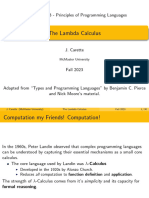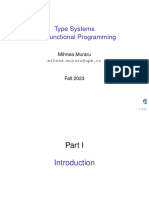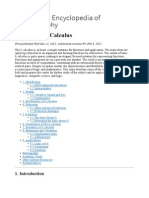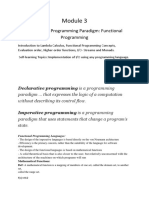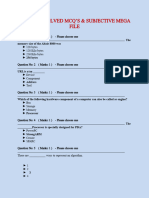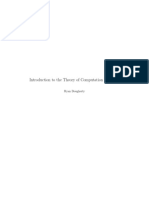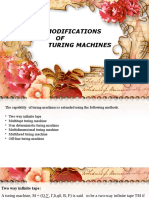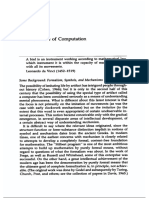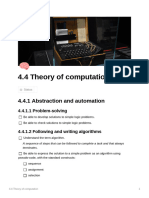0% found this document useful (0 votes)
24 views48 pagesLambda Calculus Slides
The document discusses Lambda Calculus, a formal system for defining computability introduced by Alonzo Church in the 1930s. It outlines the historical context of computation, including Hilbert's problems and the contributions of Turing and Post, and explains the syntax and evaluation rules of Lambda Calculus, including function application, recursion, and the Church-Rosser property. The document also highlights the relevance of Lambda Calculus to modern functional programming languages and presents methods for implementing recursion and built-in functions.
Uploaded by
Soumya DuttsCopyright
© © All Rights Reserved
We take content rights seriously. If you suspect this is your content, claim it here.
Available Formats
Download as PDF, TXT or read online on Scribd
0% found this document useful (0 votes)
24 views48 pagesLambda Calculus Slides
The document discusses Lambda Calculus, a formal system for defining computability introduced by Alonzo Church in the 1930s. It outlines the historical context of computation, including Hilbert's problems and the contributions of Turing and Post, and explains the syntax and evaluation rules of Lambda Calculus, including function application, recursion, and the Church-Rosser property. The document also highlights the relevance of Lambda Calculus to modern functional programming languages and presents methods for implementing recursion and built-in functions.
Uploaded by
Soumya DuttsCopyright
© © All Rights Reserved
We take content rights seriously. If you suspect this is your content, claim it here.
Available Formats
Download as PDF, TXT or read online on Scribd
/ 48















